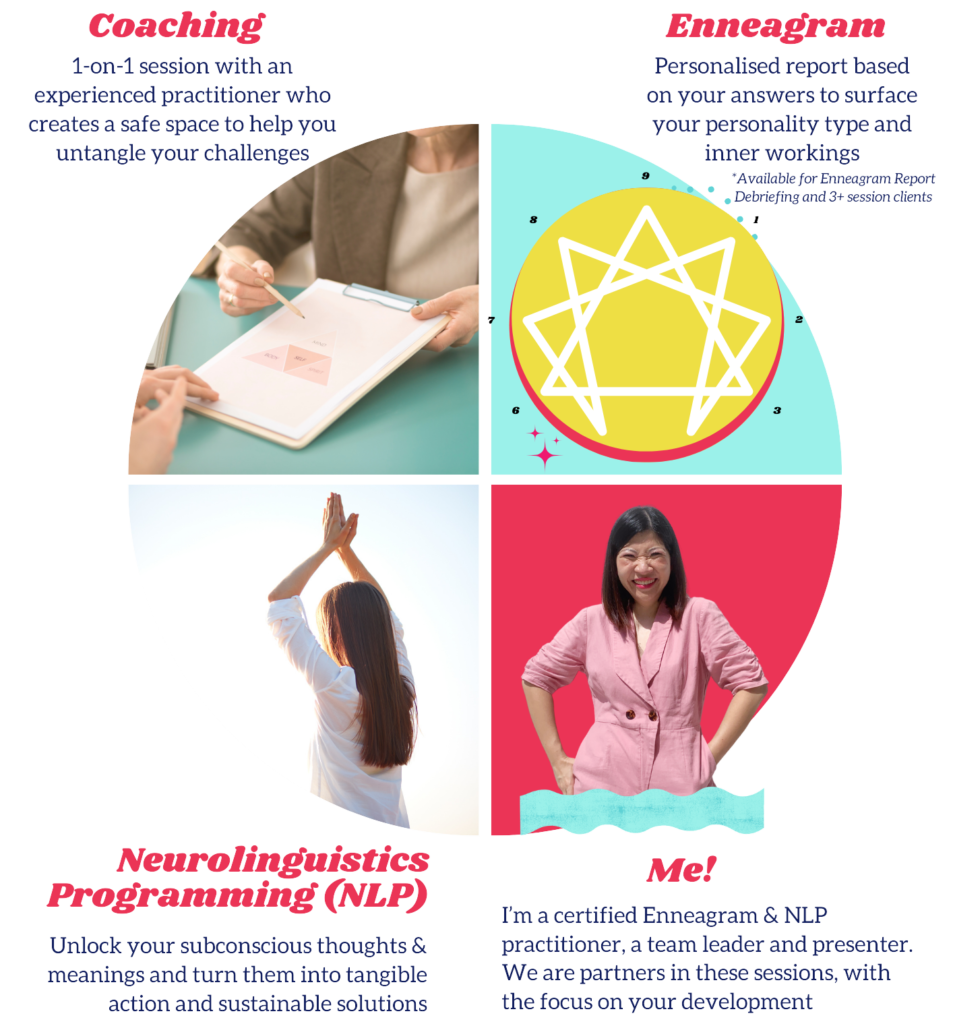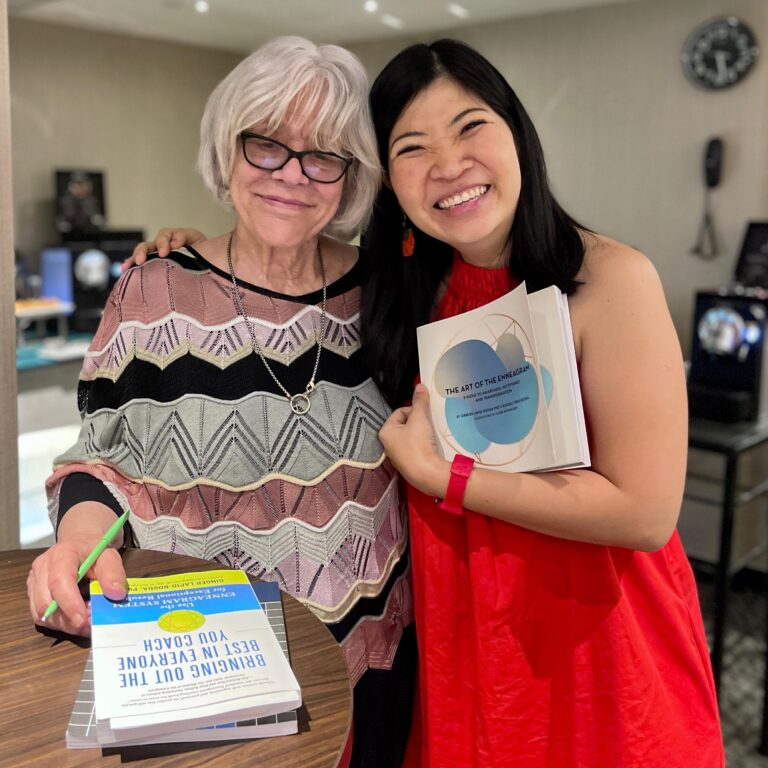"The meaning of life is not simply to exist, to survive, but to move ahead, to go up, to achieve, to conquer." - Arnold Schwarzenegger
A few months ago, I was certified by Enneagram author, pioneer and trainer coach, Ginger Lapid-Bogda. Being coached, trained and assessed by the author of many Enneagram books I own and refer to was surreal!
One of the most impactful lessons for me was the enneagram defence mechanism of each of the 9 personality types. My coursemates and I went around the room sharing how we automatically react and dug into WHY we did.
There was frustration, tears and a lot of empathy as we shared 💖 This experience helped me see the fragility and strength of each Enneagram type.
Enneagram legend, Ginger Lapid-Bogda, in the flesh!
When in stress or conflict, each type jumps into survival mode and subconsciously defaults to these.
Warning: Read on with empathy as these are ways how we psychologically protect ourselves.
Adapted from ‘Coaching with the Enneagram’ by Ginger Lapid-Bogda.
The 9 Enneagram Defence Mechanisms are:

Type 1: Reaction Formation
Exchanges unacceptable impulses for socially acceptable behaviours, masking true feelings.
Hides authentic emotions to maintain a polished image.
Example: Emma, a Type 1 CEO, outwardly praises a rival’s success while secretly feeling resentful. She posts congratulatory social media messages, further suppressing her true emotions. This coping mechanism helps her maintain a professional image.
Type 2: Repression
Pushes uncomfortable thoughts, feelings, or memories into unconsciousness.
Avoids confronting painful experiences to maintain emotional stability.
Example: Rachel, a Type 2 marketing expert, feels anxiety over an upcoming project. She reassures and comforts her close project mate that everything will work out and that she believes in her abilities.


Type 3: Identification
Assumes characteristics of others to gain approval and self-worth.
Mimics successful traits to boost confidence.
Example: Ava, a Type 3 entrepreneur, is unsure of her personal interests outside her career. She mimics an industry leaders’ hobbies in the hope to be seen as interesting and credible. By emulating a successful person, Ava feels more confident in her self-image.
Type 4: Introjection
Internalises others’ opinions, making them own self-criticisms.
Absorbs criticism entirely, fuelling self-doubt.
Example: Lily, a Type 4 artist, receives feedback from her senior, fuelling self-doubt. She asks for more feedback, hoping to improve, but struggles to distinguish constructive advice from personal attacks. This sensitivity makes her question her artistic talent.


Type 5: Isolation
Disconnects from emotions, needs or desires to avoid being overwhelmed and feeling empty.
Example: Maya, a Type 5 tech founder, avoids talking to her colleagues and friends during a stressful period. She limits social interactions, focusing on solo activities like gaming. Cutting off helps her from feeling overwhelmed.
Type 6: Projection
Attributes own unacceptable thoughts or feelings to others.
Accuses others of own fears, anxieties, or motivations.
Example: Sofia, a Type 6 financial adviser, accuses colleagues of being overly cautious, masking own fears. She questions their risk assessment, implying they’re too conservative. By projecting her fears onto others, Sofia avoids confronting her own doubts.


Type 7: Rationalisation
Creates logical explanations to justify impulsive or unacceptable behaviours.
Justifies spontaneous decisions as innovative solutions.
Example: Danielle, a Type 7 consultant, justifies her last-minute changes as “innovative solutions.” She convinces clients that her impulsive decisions are strategic, hiding her own uncertainty. This rationalisation helps her maintain her positive feelings around the project.
Type 8: Denial
Refuses to acknowledge or confront uncomfortable truths or weaknesses.
Downplays problems, insisting “everything is fine.”
Example: Julia, a Type 8 CFO, downplays company struggles, insisting “everything is fine.” She dismisses employee concerns, focusing on short-term gains. This denial helps her maintain control and confidence.


Type 9: Narcotisation
Numbs or avoids emotional pain, conflict or difficulty through distraction.
Focuses on resolving others’ conflicts to avoid addressing own.
Example: Elena, a Type 9 consultant, focuses on resolving others’ conflicts to avoid addressing her own. She fills her schedule with administration work and packing her desk. This rhythmic and familiar distraction provides her with comfort.
As you read your own type, you might think “this is totally not me.” This is absolutely normal as our enneagram defence mechanism is deeply unconscious and is so ‘part of us’ that we don’t realise it is a coping strategy.
We need ways to deal with stress, anxiety and perceived threats. Being aware that you’re using a coping mechanism can help you reflect on whether this is the most useful way to react.
You are more than your defence mechanism.
1-on-1 coaching sessions empower you to grow your self awareness and better handle the stresses in your life. In our sessions, we discuss the strengths, shadows and inclinations of your type and what you can tap on to bring changes that you want.
These coaching sessions are powered by:

In our 1-on-1 Enneagram coaching sessions, I support you in articulating, reflecting on situations and visualising. Together, we will map out and solidify your desired outcome and come up with actionable steps for you to achieve this.
Email me at positiveleepeilin@gmail.com or whatsapp +65 8288 5457 to book for more information.




